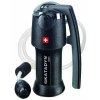The Pocket costs nearly 5 times as much, yet looking at the description on Amazon I can't figure out why.
Is it 5 times better? Is the Vario still a good filter?
I've been considering getting a water filter and I could just about stretch to a Vario. I can't justify spending £200+ on a Pocket though!
Thanks for any replies.
http://www.amazon.co.uk/Katadyn-201...sr_1_1?s=sports&ie=UTF8&qid=1346775729&sr=1-1
http://www.amazon.co.uk/Katadyn-801...sr_1_2?s=sports&ie=UTF8&qid=1346775729&sr=1-2
Is it 5 times better? Is the Vario still a good filter?
I've been considering getting a water filter and I could just about stretch to a Vario. I can't justify spending £200+ on a Pocket though!
Thanks for any replies.
http://www.amazon.co.uk/Katadyn-201...sr_1_1?s=sports&ie=UTF8&qid=1346775729&sr=1-1
http://www.amazon.co.uk/Katadyn-801...sr_1_2?s=sports&ie=UTF8&qid=1346775729&sr=1-2



